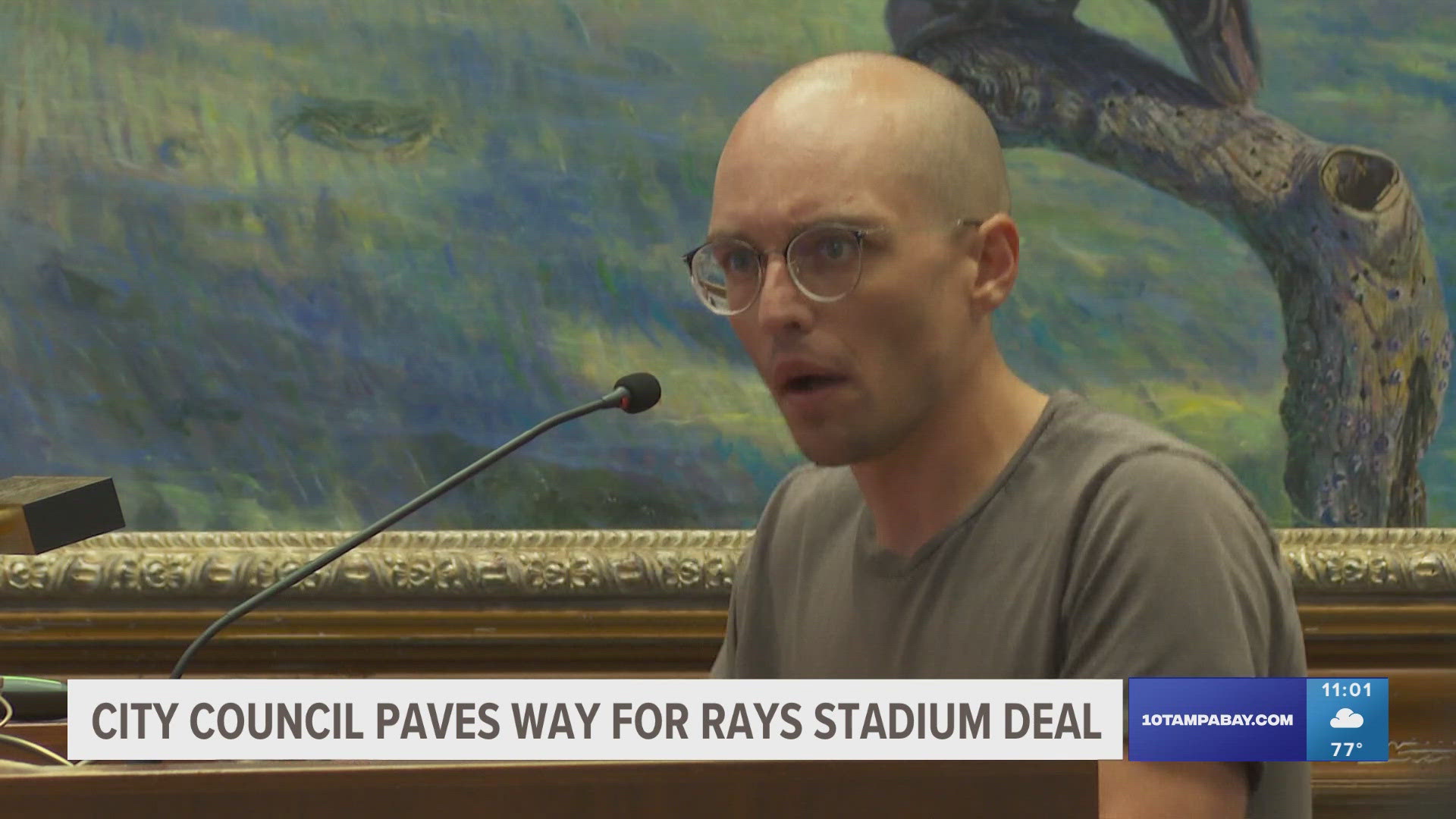ST. PETERSBURG, Fla. — In a preliminary vote on Thursday, the St. Petersburg City Council voted to move forward with a state-of-the-art Tampa Bay Rays stadium and redevelopment of the Historic Gas Plant District.
Council members narrowly voted 5-3 on the procedural vote with Council Members Richie Floyd, Lisset Hanewicz and John Muhammad voting against it.
Objecting council members voiced concerns over the speed of the process despite drafted versions of certain agreements existing instead of finalized documents.
It's just the first of several votes needed for the $1.3 billion stadium and multi-billion dollar project as a whole to be approved. In addition to another city council vote slated for July 11, any agreements about the stadium will also need approval from Pinellas County and Major League Baseball.
Still, this vote is a good indication of where St. Pete city council members stand on the project. Ultimately, it will take five of the eight council members to greenlight it.
Supporters of the new ballpark, including St. Pete Mayor Ken Welch, argue it will be a major economic driver for the region, bringing in tens of thousands of jobs both during construction and when it's done.
However, others, like Councilmember Richie Floyd, have expressed concerns that a baseball stadium isn't necessary to redevelop the Gas Plant District, especially given the public cost.
Floyd’s concerns were echoed by a group of residents who have called for a better deal that benefits the taxpayers. Welch previously dismissed those saying the majority of constituents are in favor of keeping the Rays in St. Pete.
A group of about two dozen people held a protest prior to the meeting with some sayinf they were not against keeping the Rays but felt the deal could be better. For instance, they argued the community benefits discussed during previous meetings are not part of the current deal.
Those like Alexa Manning, a descendant of the Gas Plant District, the working class African American neighborhood bulldozed for the stadium, said the deal doesn’t fulfill the promises of economic opportunity.
"We've given to this community and should remain a part of it." she said.
Some supporters who spoke during the public hearing said they acknowledged the deal isn't perfect but may be necessary to give the city a boost and praised it for its objectives to attract more jobs.
The city says the project calls for 5,400 residential units with about 1,250 units of affordable and workforce housing. Plus, 750 hotel rooms, offices, an entertainment venue, along with more funding for a new Woodson African American Museum of Florida.
As far as cost goes, the stadium’s price tag of $1.3 billion includes $287 million from the city that, with interest over the length of the deal, could add up to nearly $500 million. Pinellas County would be on the hook for about $300 million, paid for through the local bed tax.
Last month, the Rays released renderings of the proposed ballpark and surrounding Gas Plant District, promising an "intimate experience" for fans. After the ballpark and neighboring facilities are built, the team says the project will have close to 8 million square feet of development, including more than 5,000 residential units, 600 affordable/workforce housing units on site and another 650 units in other parts of St. Petersburg.
10 Tampa Bay's Aaron Parseghian contributed to this report.

